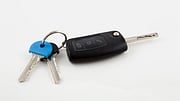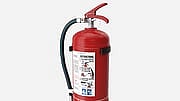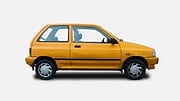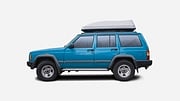Glossary
You shouldn’t need a translator to understand your insurance policy. That’s why we’ve taken the ‘what on earth does this mean?’ out of insurance terms with this comprehensive glossary.
Accident
The word accident refers to an instance that is unintentional, unforeseen, and sudden, which results in anything from damage and loss to injury and death.
Accidental Injury
As the name suggests, this is an injury that happens by accident, i.e., it is unintentional, unforeseen, and sudden.
Additional/Extended Cover
This refers to extra cover or benefits that may be included in, or added to, your insurance policy, and may come at an additional premium.
All Risks/Portable Possessions
Think of anything that you wear or keep with you most of the time – your jewellery, watch, smartphone, and laptop are some examples. These are what insurers call portable possessions and are covered under an all risks policy. There are two types of portable possessions: unspecified and specified.
Unspecified: This section provides cover for lower-valued items. These items do not need to be individually specified; however, you would need to select a total amount for which you want to cover all of them. The maximum amount that you could claim for, per item, under this section, is determined by the insurer.
Specified: This section provides cover for higher-valued items. These items need to be individually specified and you will pay a premium for each of them. The minimum amount for a specified item is determined by the insurer. Items like cell phones, prescription glasses, or bicycles must also be specified if you want them covered, regardless of their value.
Apportionment
This happens when the parties involved in an accident are both to blame. That ‘blame’ is then split between them. For example: When both parties are equally to blame, there is 50% - 50% apportionment. The percentage of responsibility placed on each party can vary and the cost of repairs is split according to this percentage.
Arson
This is when someone deliberately sets fire to property. For example, if a couple breaks up and one of them sets the other’s house on fire, this is arson and is considered a crime. Arson is generally covered by insurance but you’ll need to check the terms and conditions that apply to your insurance policy. For example, if someone sets fire to their own property just to get money out of their insurer, this is fraud and wouldn’t be covered.
Assessor
If you’re in an accident and your car is damaged, your insurer will send an assessor to take a look. He/she will carefully check all the damage and put together a report for the insurer, making recommendations on how the claim should be handled based on their assessment.
Average
You’ll usually hear this term used together with the terms underinsurance and settlement. That’s because, if you’re underinsured, the average rule will apply and a settlement amount is what you’ll get. Here’s a simple example of how the average rule works and the terms you need to know:
Let’s say you have a house that you’ve insured for R200 000. This is known as the sum insured. Now imagine that your entire house is swept away in a flood and the cost to entirely rebuild it is R300 000. This is known as the value at risk. Now imagine a different scenario – a flash flood destroys part of the house and the cost of repairs is R60 000. This is known as the loss. To calculate the settlement amount, the average calculation would be applied. It works like this:
Sum insured / value at risk x loss = settlement
R200 000 / R300 000 x R60 000 = R40 000
Amount not covered = R20 000
This R20 000 is probably not a cost you were prepared for, so to avoid landing in this position, update your sum insured regularly.
Betterment
This is when an insurer has to replace an item that has wear and tear on it with a brand new item. Because wear and tear is not an insured peril, you are placed in a better position than you were before the claim. For example, a tyre that has substantial mileage on it has to be replaced with a brand new one. Thus, the insurer will deduct the amount, which they had to pay to place you in the better position, from your claim amount.
Broker
This is a person or business that acts as the middleman between you and an insurer. You can use the services of a broker and, in doing so, allow them to make decisions about your insurance policy and manage it on your behalf. They can give you advice on which cover to take out and help you with the claims process, among other things. Brokers charge a fee for their services and earn commission from the insurers they represent.
Buildings Insurance
If your home or other buildings or fixtures on your property are damaged or destroyed, this would be covered under a buildings insurance policy. Of course, specific terms and conditions apply, so check with your insurer what exactly you’re covered for.
Burglary
Burglary is when someone gains illegal access to your property through forceful or violent means with the intention of causing loss or damage.
Changes
Moving house or changing where you park your insured car are examples of changes. These may affect your risk and it’s your responsibility to tell your insurer about them.
If you’re unsure whether a change will affect your risk, get in touch with your insurer to find out. It’s always better to be safe than sorry as non-disclosure of certain information could jeopardise your insurance policy and any claims you may have.
Claim
An insurance claim is a formal request to your insurer to indemnify you for the loss of, or damage to, an insured item.
Claim Finalisation
This is when a claim has been settled or rejected.
Commencement Date
This is the date and time your insurance cover begins. For example, if your insurance policy commences on 1 February at 12:00 and you have an accident after that day and time, you will have cover. You must, however, adhere to all the terms and conditions of your insurance policy to enjoy full cover.
Commission
This is money insurers pay brokers and representatives for selling insurance policies on their behalf. This is usually shown on your policy schedule as a percentage of your premium.
Compensation
This is the money paid to you or your nominated beneficiary if the policyholder died or suffered an injury.
Comprehensive Vehicle Cover
This covers more potential risks than any other vehicle cover, which is what makes it ‘comprehensive’. With this cover you’ll be able to claim if your vehicle:
- is damaged or written-off in an accident;
- is stolen; or
- caused damage to other parties’ property (third party)
Consequential Loss and Resultant Damage
This is loss or damage caused as a result of an insured peril. Consequential loss usually refers to financial loss, e.g., if you lost income while your vehicle was in for repairs after an accident. Resultant damage usually refers to additional damage to property, e.g., further damage is caused to your vehicle because you continued driving it after an accident.
Contract of Insurance
An insurance contract is a legal agreement between you and your insurer, which is enforced by law, to indemnify you for certain events that may cause loss or damage to your insured property, or to indemnify other parties on your behalf if you are legally responsible for loss or damage caused to their property.
Cover
The word ‘cover’ means to ‘protect or provide shelter for something’ and in essence, this is what insurance does. While insurance cannot stop events from happening, it helps you to recover from them by replacing or repairing your lost or damaged items.
Cover Note/Noting of Interest
This is a document that an insurer issues to prove to the finance house that a financed item is insured. This is often used when purchasing a new vehicle, as dealers won’t let a car, which is financed, off the showroom floor without proof that the vehicle is insured.
Declaration
This is a statement that should provide true and complete information, and which does not exclude or misrepresent any material facts. The declarations you make form the basis of your insurance contract. If these declarations are false or misleading, an insurer may cancel your insurance policy or reject your claim.
Declined
This is when an insurer refuses to take on a certain risk or to enter into an insurance contract. An insurer may also decide to cancel an existing insurance contract. There could be various reasons for this, like the fact that that they don’t underwrite that particular risk or because of your previous claims history.
Disclosure/Non-disclosure
Disclosure refers to making information known and non-disclosure refers to the opposite – keeping information secret. It’s your duty to disclose all information that could be relevant to your insurer accepting your risk. For example, if you move homes, you need to tell your insurer, as a change in address could change your risk, which could affect their willingness to continue providing you with cover or to pay a claim. If you were found guilty of dishonesty or fraud previously, you need to inform your insurer.
Endorsement
An endorsement is an additional condition or restriction added to an insurance policy. For example, an endorsement may be added to a home contents policy to say that you’ll only be covered for burglary and theft if a burglar alarm is activated whenever your home is left unoccupied.
Excess
If you have a claim, there is a portion of the claim amount that is not covered by insurance. This is known as the excess and needs to be paid out of your pocket. An excess could be either a fixed amount or a percentage of the claim amount, depending on your insurer.
There are four different kinds of excesses:
1. Basic Excess
This is the minimum, first amount that you have to pay towards your claim.
2. Additional Excess
This is an excess that must be paid in addition to the basic excess and is based on specific risk criteria. For example, if a driver is under the age of 25 or has only had his/her licence for a certain number of years, additional excesses may apply.
3. Voluntary Excess
This is an additional excess you choose to pay in exchange for a decreased premium.
4. Cumulative Excess
This is the sum of additional excesses, if they are all for the same claim.
Exclusion
All policies have exclusions, which can be general or specific, and are not covered by your insurance policy.
General exclusions: These are events that are not covered by the insurer, no matter what cover is selected or which risk items they have insured. An example is an act of war.
Specific exclusions: These are events that will not be covered by the insurer and only apply to specific insured items or cover types. For example, a specific exclusion under a vehicle policy is that the insurer will not cover you for damage caused whilst you were driving under the influence of alcohol or drugs.
Ex Gratia Payment
This is a term used by an insurer when a payment is made as an expression of their goodwill. In other words, they are not liable under your policy to pay for your loss, but do so to maintain a good relationship.
Forcible Entry or Exit
If your car or home is broken into, your insurer may want to see signs of forced entry or exit as a condition of paying your claim. A sign of forced entry or exit could be a broken window or lock.
Good Faith
This is critical to a good relationship between you and your insurer and applies to both of you. When entering into an insurance contract, both the insured and the insurer do so in good faith. From the insurer’s side, this means not misleading the insured or hiding any policy terms and conditions. From the insured’s side, this means disclosing all necessary information and not misrepresenting any facts that could be relevant to the insurer accepting your risk.
Hazard
A hazard is a condition that may create or increase the chance of a loss resulting from an insured peril.
When an underwriter considers your risk to decide whether to insure you or not, or for how much, he/she considers two basic factors:
1. A physical hazard that affects the chance of loss, such as a home without burglar bars.
2. A moral hazard, which is more difficult to recognise as it relates to the integrity of the insured.
Home Contents
These are all the things that you could take with you if you were moving house. Imagine that your home or any building could be turned upside down; everything that fell out would be considered contents.
Housebreaking
Also known as burglary, housebreaking is forcible entry into premises with the intention of committing a crime.
Household Member
This is any person who lives with you, the insured, at your residential address, excluding tenants and domestic workers.
Indemnity
This is defined as security or protection against a loss. Most short-term insurance contracts are contracts of indemnity in that the insurer undertakes, as far as possible, to indemnify the insured following a loss from an insured peril. To indemnify the insured is to place him/her back in the same financial position that he/she was in prior to a loss.
Insurable Interest
In order to insure something, you need to have an insurable interest in it, meaning that youbenefit financially from its protection, or you could suffer financially if it was lost or damaged. Generally, insurable interest is based on ownership or legal possession.
Insurance
This is an arrangement between you, the insured, and an insurance company, in which the insurance company offers you indemnity or compensation for liability, damage, or loss resulting from insured perils.
Insurance Company/Insurer
This is the company who agrees to indemnify or compensate you, the insured, for losses resulting from insured perils.
(The) Insured
This is the person, group or organisation that is covered by an insurance policy.
Insurer
Insurer is another term for insurance company.
Insured Peril
An insured peril is a specific risk or cause of damage or loss that is covered by an insurance policy. Insured perils are instances that are unexpected or accidental and include things like fire, theft, or flooding.
Lapse
A policy lapses when your insurance premium is not paid on time. If this happens, you will not be covered after the date of your last premium payment. So, for example, if your last premium was paid on 1 January and your next premium was due on 1 February (and wasn’t paid), any insured event that happened after 1 February will not be covered.
Level of Risk
Insurers establish risk based on two factors:
1. The probability of damage or loss occurring: This refers to how likely it is that a loss will happen. For example, in South Africa, your car is more likely to be damaged in an accident than an earthquake. Thus, the probability of loss from an accident is high while the probability of loss from an earthquake is low.
2. The cost resulting from that loss or damage: This refers to the monetary value of a loss, and the terms high and low are also used to describe this. For example, a car worth R500 000 is much more expensive to repair or replace than one worth R130 000. So, naturally, the first car is a high risk while the second is a low risk.
Liability Insurance
Also known as third-party insurance, liability insurance provides indemnity or compensation to a third party if you’re held legally liable for the death or injury of a third party, or for damage to his/her property. There are two types of liability insurance:
- Personal liability: This is for you as an individual, when you are held personally liable for the death or injury of a third party, or for damage to his/her property.
- Public liability: This is for businesses that sell products or provide services to the public and provides indemnity or compensation for claims made against them. For example, if a customer falls and breaks his leg after tripping over an uneven step at an office building and claims against the business for the injury, this is a public liability claim. In other words, a member of the public is holding the business responsible for the injury.
Loss
Loss describes the loss of or damage to property as well as the injury or death of a third party. There are four categories of loss:
- Liability losses/third-party losses
- Own damage losses
- Sentimental losses
- Consequential losses
Liability Losses/Third-party Losses
This is when you’re held legally responsible for:
- damage to someone else's property; and/or
- injury or death of a third party
A court may hold you liable for either of the above and order you to compensate the third party for the damage, injury, or death. You would suffer a loss because you’d have to pay money to clear yourself of this liability.
Own Damage Losses
This refers to the losses you may suffer if there is damage to your own property or if you’re injured as result of an insured peril. Own damage losses can result from a number of insured perils, which are defined in your insurance policy.
Sentimental Losses
This refers to a loss that insurance cannot pay for because the value of the item is sentimental and not financial. Take a photo album, for example. An insurer can’t go back in time and recapture special moments.
Consequential Losses
This is loss or damage caused as a result of an insured peril. Consequential loss usually refers to financial loss, e.g., if you lost income while your vehicle was in for repairs after an accident.
Loss Adjuster
A loss adjuster is a person employed by an insurer to investigate a claim. A loss adjuster may be sent to your home after a claim is made to assess the damage or loss that you’re claiming for and ask questions to clarify the facts of the claim. They will then compile a report for the insurer, which will be used to determine if the claim will covered and for how much.
Malicious Damage
When a person deliberately causes damage to the rights or property of another person, this is known as malicious damage.
Material Fact
A material fact is anything that will influence an insurer’s decision to insure you or not, and if they decide to insure you, what terms and conditions they’ll apply, like excesses and policy exclusions.
Material Misrepresentation
When taking out an insurance policy, you’ll be asked a number of questions. This is so that the insurer can fully understand the risk they’re taking on by insuring you. If you’re not entirely honest when answering these questions, and don’t share the information the insurer would need to know before accepting your risk, this is known as material misrepresentation.
New for Old
If an insured item is lost or destroyed and is replaced with a brand new, similar item, this is known as new for old.
No-claim Bonus (NCB)
If you haven’t claimed from insurance for a certain number of years (usually between one and five), you may qualify for an NCB, which could result in a discount on your insurance premium. There are certain criteria for receiving this bonus, e.g., having had comprehensive insurance, without interruption, for a set period of time.
Ombudsman for Insurance
If you disagree with a decision made by your insurer, e.g., they rejected your claim, you can approach the relevant Insurance Ombudsman. The Ombudsman is an independent official who investigates complaints made by the insured against an insurer. He/she is responsible for protecting the interests of both parties and for settling disagreements between the two fairly.
Personal Accident Insurance
This type of insurance provides cover if you are injured, disabled, or pass away as the result of an accident.
Policy
This is the contract between the insured and the insurer regarding the cover taken out by the insured, and the terms and conditions that apply.
Policy Schedule
A policy schedule is the document that lists all the policyholder’s cover, their premium, deduction dates, excesses, and endorsements, as well as the regular driver (where relevant).
Policyholder
If you take out an insurance policy in your name, you are the policyholder. The policyholder is not always the same person as the insured. For example, you could take out an insurance policy for your child’s car. In this case, you would be the policyholder and your child would be the insured.
Policyholder Protection Rules
These are rules, set down by the Financial Sector Conduct Authority, which insurers have to follow when it comes to dealing fairly with policyholders.
Premium
This is the amount you pay your insurer for the cover they provide, and is usually paid monthly.
Proof of Ownership
Sometimes, when claiming for items that are insured, the insurer will ask you for proof of ownership for that item. This would be something like an invoice or a valuation certificate with your details on it, which proves that you did, in fact, own the item and are not claiming for something that never existed.
Proof of Quantum
This refers to the value or cost of the insured item you’re claiming for. This value can be proven with a document like an invoice or a valuation certificate.
Pro Rata
Pro rata refers to a portion of something and, in insurance, it’s usually used in reference to premiums. For example, if you took out an insurance policy on 20 June, you would only pay a portion of the monthly premium (a pro rata premium) because you only had cover for a portion of the month (10 days instead of the full 30).
Quote
A quote is an estimated premium for an insurance policy and may change depending on the type of information that you give an insurer.
Regular Driver
A regular driver is the person who drives an insured vehicle more frequently than any other person, and whose name is on the policy schedule for the vehicle.
Reinsurance
This is insurance for insurance companies and ensures that they are covered in the event of having to pay out an unexpected number of expensive claims. For example, a massive thunderstorm hits large parts of the country and causes huge damage and loss. As a result, thousands of customers claim at the same time and the insurance company may need assistance from their reinsurer to cover these claim costs.
Reinstatement
This is when an insurance policy is restarted after it has been cancelled.
Renewal
Insurance policies are usually renewed each year in the anniversary month that the policy commenced. This is usually when premiums are increased or decreased based on various factors like the economic situation in the country, changes in your risk profile, and your claims history.
Reject
This is when an insurer does not pay a claim. This could be due to a number of factors, e.g., the insured did not adhere to the terms and conditions of their insurance policy.
Risk
In insurance, there are different uses for the word risk. There are risks that apply to situations that involve danger, e.g., a fire risk. You, as the insured, could be considered a good or bad risk, depending on things like your insurance history. For example, if you’ve made lots of claims in the past or had lots of interruptions in cover, you could be considered a bad risk, whereas, if you have a good claims history and have had continuous cover for many years, you would be considered a good risk.
The Road Accident Fund (RAF)
All drivers of vehicles on South African roads are automatically covered by the RAF for liability claims for death and injury caused by a third party. Because of this, all vehicle insurance policies in South Africa have exclusions for any cover provided for by the RAF.
Who can claim from the RAF?
- A person who was injured in an accident (excluding a driver who was the sole cause of an accident);
- A dependent of a deceased breadwinner who was injured in an accident;
- A close relative of a deceased person who was injured in an accident, who paid for a funeral;
- A person under the age of 18 (with assistance from a parent or legal guardian) who was injured in an accident.
Salvage
Salvage is the property that can be saved from a fire, storm, theft, or accident in either a damaged or a partially damaged state, e.g., the wreck of an accident-damaged car, a stolen and recovered item, or a portion of a hi-fi set left after a burglary.
Sum Insured
This is the amount that you insure your property for, and is also the maximum amount that the insurer will pay for a claim.
Terms and Conditions
These are the rules that relate to your chosen insurance cover.
Third Party
A third party is someone involved in a claim who is neither the insured nor the insurer. For example, if you drive into someone, the person in the other car is the third party.
Third Party Only Insurance
With this cover, you will be able to claim for the damage you caused to other parties' property. While it is the most cost-effective cover, it is important to remember that you won’t be covered for the theft of your car and for any damages to your car.
Third Party, Fire, and Theft Insurance
As the name suggests, this insurance provides cover if you’re in an accident and a third party is injured or their property, in this case their car, is damaged as a result. It also covers your vehicle for fire damage or if it’s stolen. It does not, however, cover any accident damage caused to your vehicle.
Underinsured
You are underinsured when the value of cover you have chosen for your property does not cover the full value of a claim. For example, you took out buildings cover of R1 million for your home but the cost to rebuild your home is R2 million. In this example, you’d be underinsured by
R1 million. If you submit a claim for damages worth R100 000, the insurer will only pay 50% of this claim as you were underinsured by 50%.
Underwriter
An underwriter is the company that decides to accept a specific risk at a specific premium. This company appoints people who look at the risks of insuring a person and their property, based on their answers to specific underwriting questions, and other factors like their insurance and claims history. These people will decide on behalf of the underwriter whether or not to accept the risk, how much cover to provide, and what premium to charge.
Underwriting
Underwriting is the process of gathering information from a potential customer to decide whether or not to accept the risk of insuring them and what premium to charge.
Valuation Certificate
This is a document that states the value of certain high-value items like jewellery or antiques, and can be used to show proof of ownership when claiming from your insurer.
Vehicle
Any motor vehicle or light delivery vehicle (LDV).
Vehicle Insurance
Vehicle insurance provides cover for various insured perils, including: accidental damage, theft, and third party cover. The insured perils you’re covered for will depend on what vehicle insurance you have, i.e., comprehensive, third party, fire, and theft, or third party only.
Wear and Tear
Wear and tear is the damage caused to an item as the result of regular use or use over a long period of time, and is not covered by insurance.
Write-off/Total Loss
If a vehicle is damaged beyond repair, or repairing it would cost more than the value of the vehicle, an insurer will write-off the vehicle.














